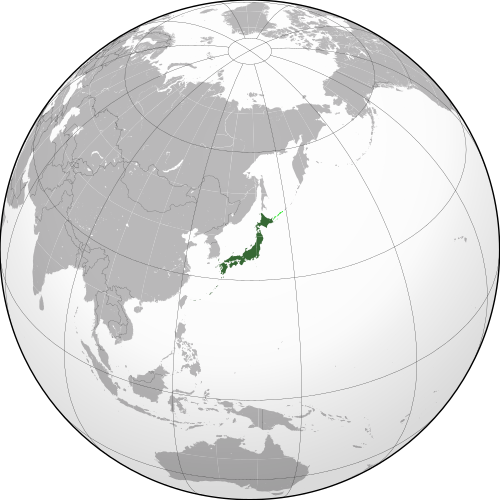 Japan is an island country in East Asia. Located in the Pacific Ocean, it lies to the east of the Sea of Japan, China, North Korea, South Korea andRussia, stretching from the Sea of Okhotsk in the north to the East China Sea and Taiwan in the south. The characters that make up Japan’s name mean “sun-origin”, which is why Japan is sometimes referred to as the “Land of the Rising Sun”.
Japan is an island country in East Asia. Located in the Pacific Ocean, it lies to the east of the Sea of Japan, China, North Korea, South Korea andRussia, stretching from the Sea of Okhotsk in the north to the East China Sea and Taiwan in the south. The characters that make up Japan’s name mean “sun-origin”, which is why Japan is sometimes referred to as the “Land of the Rising Sun”.
Japan is an archipelago of 6,852 islands. The four largest islands are Honshū, Hokkaidō, Kyūshū and Shikoku, together accounting for 97% of Japan’s land area. Most of the islands are mountainous, many volcanic; for example, Japan’s highest peak, Mount Fuji, is a volcano. Japan has the world’s tenth-largest population, with over 127 million people. The Greater Tokyo Area, which includes the de facto capital city of Tokyo and several surrounding prefectures, is the largest metropolitan area in the world, with over 30 million residents.
Archaeological research indicates that people were living on the islands of Japan as early as the Upper Paleolithic period. The first written mention of Japan begins with brief appearances in Chinese history texts from the first century A.D. Influence from the outside world followed by long periods of isolation has characterized Japan’s history. Since adopting its constitution in 1947, Japan has maintained a unitary constitutional monarchy with an emperor and an elected parliament called the Diet.
A major economic power, Japan has the world’s second-largest economy by nominal GDP and the third largest in purchasing power parity. It is also the world’s fourth largest exporter and fifth largest importer. It is also the only Asian country in the G8 and is currently serving as a non-permanent member of the UN Security Council. Although Japan has officially renounced its right to declare war, it maintains a modern and extensive military force which is employed in self-defense and peacekeeping roles. It is a developed country with very high living standards (10th highest HDI). Japan has the highest life expectancy of any country in the world (according to both the UN and WHO estimates) and the third lowest infant mortality rate.
Japanese culture has evolved greatly over the years, from the country’s original Jōmon culture to its contemporary culture, which combines influences from Asia, Europe and North America. Traditional Japanese arts include crafts(ikebana, origami, ukiyo-e, dolls, lacquerware, pottery), performances (bunraku, dance, kabuki, noh, rakugo), traditions (games, tea ceremony, Budō, architecture, gardens, swords) and cuisine. The fusion of traditional woodblock printing and Western art led to the creation of manga, a typically Japanese comic book format that is now popular within and outside Japan. Manga-influenced animation for television and film is called anime. Japanese-made video game consoles have prospered since the 1980s and continue to have influence around the world.
Japan’s farming population has been declining steadily and was less than 5% of the total population in 2004; agriculture accounted for less than 2% of the gross domestic product. Arable land is intensively cultivated; farmers use irrigation, terracing, and multiple cropping to coax rich crops from the soil. Rice and other cereals, sugar beets, vegetables, and fruit are the main crops; some industrial crops, such as mulberry trees (for feeding silkworms), are also grown, and livestock is raised. Fishing is highly developed, and the annual catch is one of the largest in the world. The decision by many nations to extend economic zones 200 mi (322 km) offshore has forced Japan to concentrate on more efficiently exploiting its own coastal and inland waters.
Notes from Wikipedia and Answers.com









